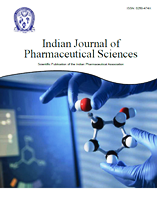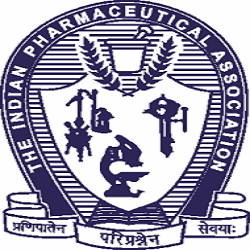Abstract
Effects of Famotidine and Naproxen on Serum Protein and Lipid Metabolism in Quails: An Ex situ Pharmacokinetic Study
Department of Zoology, Ghazi University, DG Khan, 1Institute of Zoology, Bahauddin Zakariya University, Multan 60000, Pakistan, 2Department of Pharmaceutics, 3Department of Pharmacology and Toxicology, College of Pharmacy, 4Department of Biology, College of Science, Jazan University, Jazan 45142, Saudi Arabia, 5Department of Pharmacology and Toxicology, Faculty of Pharmacy, Sohag University, Sohag 82524, Egypt
Correspondence Address:
Ahmad Salawi, Department of Pharmaceutics, 3Department of Pharmacology and Toxicology, College of Pharmacy, Jazan 45142, Saudi Arabia, E-mail: asalawi@jazanu.edu.sa
The current experiment describes hematological restrictions such as blood cells, packed cell volume, and the percentage of mean corpuscles value. It also evaluates the influence of drugs on critical body organs such as the liver, kidney, and heart by analyzing serum biochemical data. Our main goal is to administer weight-dependent doses of anti-inflammatory pharmaceuticals to birds and study the effects of those medications. Five groups of roughly fifty common quails were acquired. Four of the five groups were labeled as experimental, while one was classified as the control group. Subsequently, the experimental groups were divided into four groups, with each group being assigned a trial of 5, 10, 15, or 20 d. Dose of non-steroid anti-inflammatory medications were administrated according to weight of bird. Administrative dose of Famotidine and Naproxen was 0.02 mg/g and 0.55 mg/g respectively, 2X a day. Clinical signs included hypersomnia, reduced food and drink intake, gout, dehydration, accumulation of nitrogen products in the body, and restlessness. There was also significant swelling in the foot. Watery eyes later on, accompanied by swollen eyes, fever, weight loss, and beak cutting in all birds that received the dose, but no similar signs in birds that were not treated. A certain percentage of birds treated with Naproxen died. Administration of Famotidine during summer trial showed significant increase in total white blood cell (p=0.003), uric acid (p=0.02), creatine kinase myocardial band level (p=0.014), mean corpuscular volume level (p=0.006) ASAT (p=0.007), aminotransferase (p=0.029), albumin (p=0.016). While during winter trial uric acid (p=0.000), aminotransferase (p=0.041), mean corpuscular volume (p=0.014), albumin level (p=0.006 ) uric acid (p=0.035) and while administration of naproxen showed cholesterol level (p=0.003), aminotransferase (p=0.008), mean corpuscular volume (p=0.003), total white blood count (p=0.008), creatine kinase myocardial band (p=0.014), albumin (p=0.011) and aminotransferase (p=0.001).While during winter mean corpuscular volume (p=0.004), white blood cell count, (p=0.016), cholesterol (p=0.011), albumin (p=0.007), total protein (p=0.000), total white blood cell count (p=0.002), albumin level (p=0.014) and aminotransferase (p=0.036).
Full-Text | PDF



